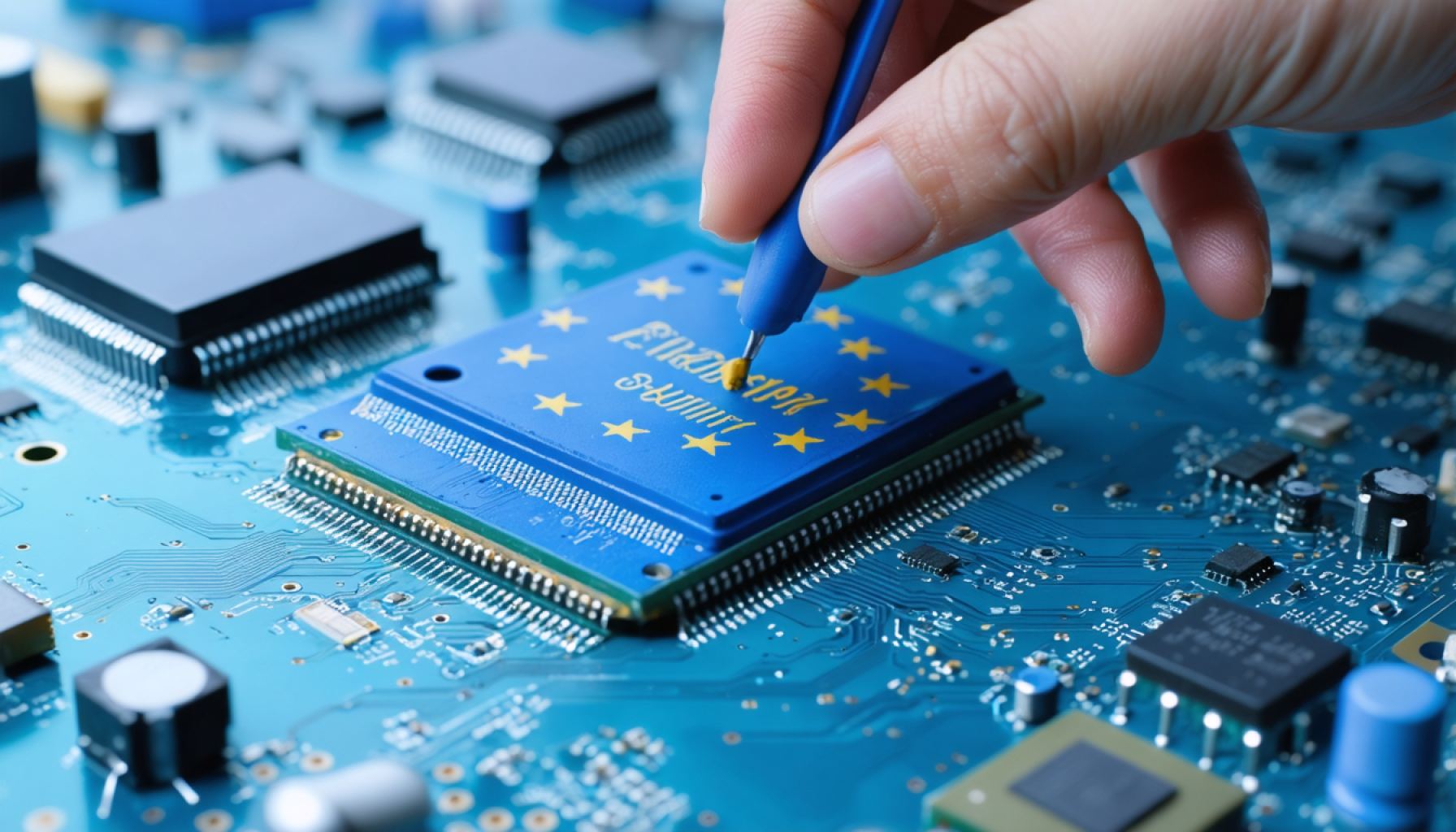- European Parliament members urge the European Commission to boost the semiconductor industry to compete globally, especially in artificial intelligence.
- 54 lawmakers highlight geopolitical tensions as a reason to advance Europe’s tech capabilities, moving beyond past achievements.
- Europe aims to safeguard its tech industry from external legal influences while competing with global tech giants such as the U.S. and China.
- The EU Chips Act of 2023 faced implementation challenges, with major firms like Intel retracting plans in Germany.
- The European Commission is set to introduce new investment packages, but gaps in semiconductor strategy remain problematic.
- The call to action is not just about industry growth but ensuring Europe’s leadership in a sovereign digital future.
A subtle yet significant shift is brewing within Europe’s halls of power. Members of the European Parliament are rattling the cage with an impassioned plea to the European Commission: intensify your efforts to nurture the continent’s semiconductor industry. This isn’t merely about chips—it’s about Europe staking its claim in the cutthroat realm of artificial intelligence and other technologies poised to redefine industries and economies alike.
With a bold conviction, 54 lawmakers from across major parliamentary factions have sounded the alarm. Recent geopolitical tensions, they argue, are a clarion call that Europe can no longer rest on the laurels of past technological prowess. The missive is clear: transform the EU into a magnet for research, development, and investment. The clock is ticking, they insist, and the current trajectory, conspicuously marked by gaps and stumbles, lacks the thrust to propel Europe’s long-term industrial vision into reality.
The backdrop of this parliamentary pressure is a continent grappling with the ripples of a global tech rivalry. Across the Atlantic, giants like the United States vie for dominance, with China rapidly closing ranks. Europe finds itself at a crossroads, urged to safeguard its technological champions from the encroachments of extraterritorial strictures—where a nation imposes its laws beyond its borders.
But there’s a shadow over these ambitions. The first EU Chips Act of 2023, though well-intentioned, found itself tethered by execution woes—its ambitious sails unable to catch the winds of advanced manufacturing. High-profile companies such as Intel have retreated from plans for substantial operations in Germany, leaving an investment vacuum.
While the European Commission has promised a slew of investment packages this year, a gaping hole remains where semiconductor strategy should be thriving. The lawmakers’ letter, addressed to digital chief Henna Virkkunen, underscores this deficit with urgency. Amidst the cacophony, there’s a demand not just for action, but for a bold reimagining of Europe’s technological aspirations.
The bells toll not only for those within the corridors of European power but for every citizen whose future hinges on a continent at the forefront of technological advancement. Europe’s journey towards semiconductor supremacy is not merely a strategic imperative—it’s a decisive leap towards a sovereign digital future.
Why Europe’s Semiconductor Strategy Matters More Than Ever
The Growing Importance of Europe’s Semiconductor Strategy
The push by members of the European Parliament to accelerate efforts in nurturing Europe’s semiconductor industry signals a critical juncture for the continent. Semiconductors are the backbone of modern technologies, driving advancements in artificial intelligence, automotive technologies, telecommunications, and beyond. As global reliance on these technologies grows, Europe’s position in the semiconductor market becomes increasingly vital—not only for economic competitiveness but also to ensure technological sovereignty.
Real-World Use Cases and Industry Trends
By bolstering its semiconductor industry, Europe could see significant growth in several sectors:
– Automotive: Europe is home to some of the largest automotive manufacturers, and the shift towards electric and autonomous vehicles will increase demand for advanced semiconductors.
– Telecommunications: As 5G technology advances, Europe stands to benefit from local semiconductor production for telecommunications infrastructure.
– Artificial Intelligence: Strengthening semiconductor capabilities will enhance AI research and development, positioning Europe as a global leader in emerging technologies.
Challenges and Limitations
Despite its promise, Europe faces challenges in revitalizing its semiconductor industry. The EU Chips Act of 2023 exemplifies these obstacles, with issues in execution and investment. High-profile retreats, such as Intel’s decision to scale back plans in Germany, highlight the difficulties of establishing a competitive edge.
Market Forecasts
According to forecasts by industry experts, the global semiconductor market is expected to exceed $1 trillion by 2030. For Europe, capturing even a fraction of this growth could result in significant economic benefits and job creation. However, achieving this will require focused investment and policy support.
Current Initiatives and Future Strategies
The European Commission has introduced investment packages aiming to attract and retain semiconductor manufacturing. For these efforts to succeed, Europe must address current gaps by fostering collaboration across member states and encouraging private-public partnerships.
Expert Opinions and Recommendations
Industry experts suggest several actionable steps Europe could take:
1. Streamline Regulations: Simplifying regulations for semiconductor manufacturers could enhance Europe’s appeal as an investment destination.
2. Increase Funding for R&D: Prioritizing funding for semiconductor research and development will be crucial for staying ahead in innovation.
3. Enhance Collaboration: Encouraging collaboration between countries, academic institutions, and industries can lead to more robust technological ecosystems.
Security and Sustainability
Europe’s semiconductor strategy should also focus on environmentally sustainable manufacturing practices, ensuring that growth in this sector contributes to broader climate goals.
Quick Tips to Foster Local Semiconductor Growth
– Encourage educational initiatives to build a skilled workforce for the semiconductor industry.
– Develop local supply chain networks to reduce reliance on imports.
For readers interested in further insights on the European Union’s technological policy, visit the official European Union website at Europa.
By fortifying its semiconductor industry, Europe can secure its technological future and assert its influence in the global tech landscape.











